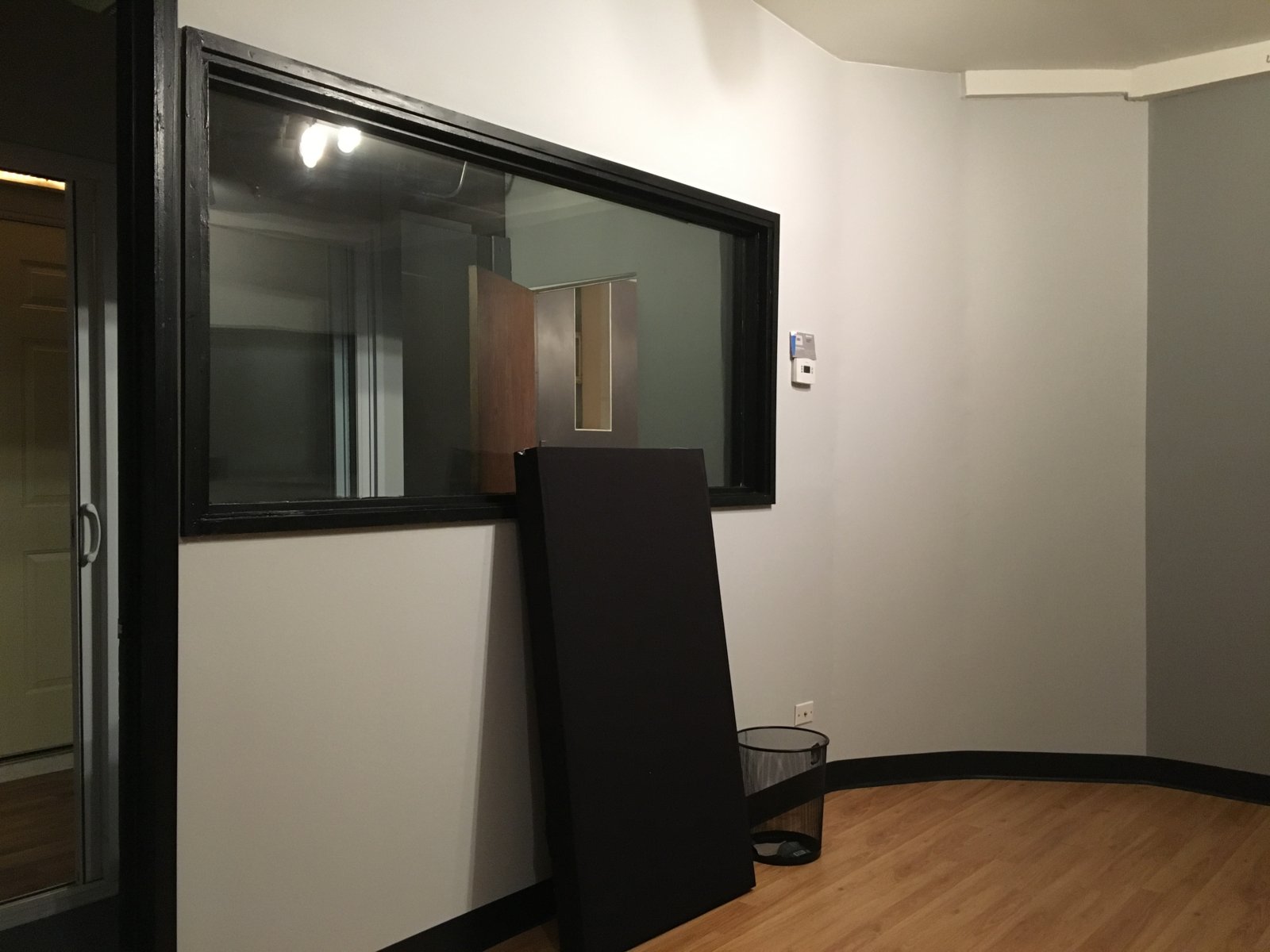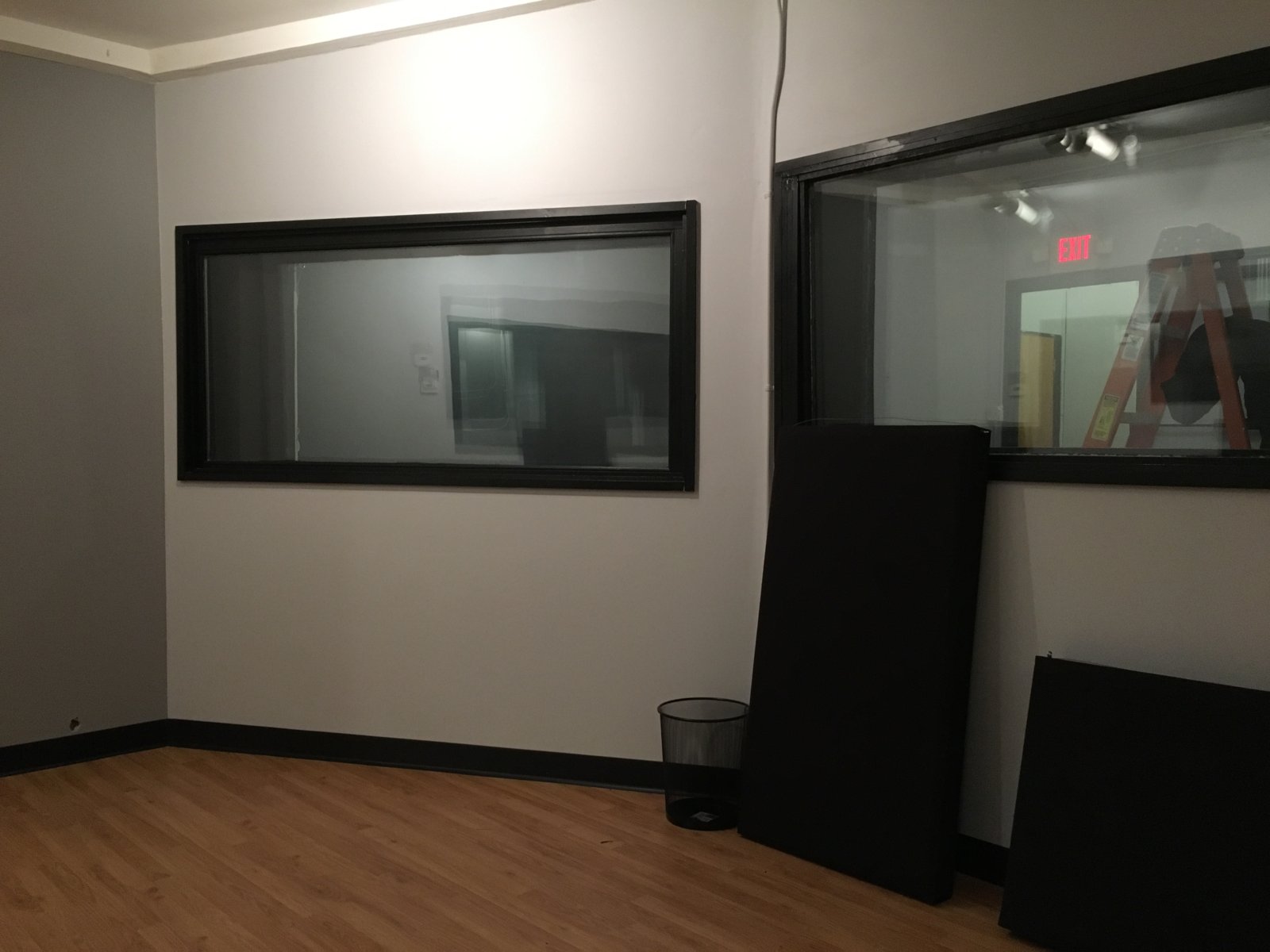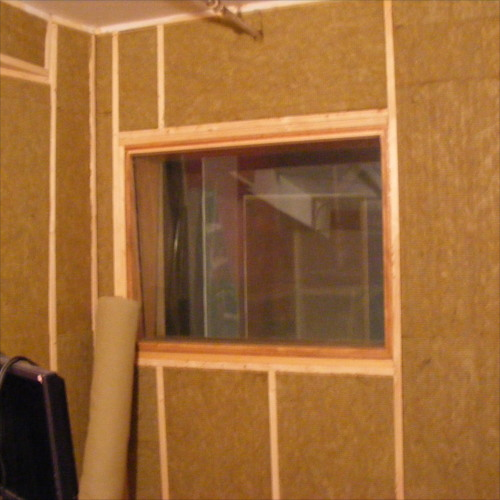Hey guys!
I’m putting together my new control room, and I’m a little bit stumped on some of my treatment options. Normally I know where to start putting panels up based on listening position, measuring for first reflections, etc.. but this control room is built in the shape of something like an octagon cut in half. (Pics below). The ceiling is also pitched down towards the front of the room.
As you can see, I’m kinda surrounded by line-of-sight windows to other areas of the studio. Should I just stand a couple 2’x4’x4” panels on the floor? Can I just ignore those early reflection points based on the design of the room? I’m going to treat the ceiling as well, so should I just channel more effort into that?
Thanks everyone for any help, you all are really the best here! Links to resources about non-rectangular room would also be really appreciated. I’ve been trying to consume as much as I can lately.
Later!
Comments
First your windows. a heavy thick theater curtain will do the t
First your windows. a heavy thick theater curtain will do the trick for absorbing sound, while keeping the widows accessible. if you need more absorption, than a removable window plug can be made out of thicker absorption materials.
There's some basic 'rules of thumb' that can be adhered to for an average listening room. Bass trapping is #1. Reducing Direct Reflections is #2. The ceiling is the first place i'd start. put a cloud up on the entire ceiling, leaving a perimeter of 2' open all the way around. use the ceiling junctions as for broadband bass trapping. Id do an angled [straddled 45 degrees] rigid fiberglass panel, with loose, fluffy fiberglass insulation behind it. it could also just be rectangular, either way. The front wall (ie the one you face, the wall behind the speakers) Can be completely dead, and as thick as possible. id make it a foot or two thick if possible, even if it covered the window partially. nonetheless, it looks like a 2x3 or 2x4 frame could fit without interference. i'd go 1" rigid fiberglass, with fluffy behind it, and an airspace between the wall.
then sit about 40% from the front wall as the rough listening position. set your speakers up either asd close to the wall as possible, or 2.5-3' away from the wall. Take a mirror, and (have an assistant) slide it along the walls to the left and right, at listening height, and mark wherever you see the speakers tweeters in the mirror. This area/spots will require absorption.
The back wall can be used for a nice thick bass trap, and possibly have some tuned slats. rear corners bass trap.
once you've got your basic RFZ (reflection free zone) style treatment up, you do some testing with your REW and your ears, and you find the best spot for the speakers, by trial and error.
once your speakers and listening positioning are optimal, you can add any more finely tuned treatments (narrow band), as well as any other broad treatments.
for my money, its always cheaper, easier, better sounding, looking, and flexible, to just build a 2x_ frame floor to ceiling, than a bunch of individual panels. having done both wals several times, frame wins for fixed installs. you just make the frame, put the treatment in, get everything sounding good, and when its ready, just staple fabric to it and be done. Moving panels on the wall is a pain, and can make holes, wrapping 24+ panels gets old. its way more framing work, more $ time and waste, and looks very 'off the shelf' (<-imho).
you'll want Rubber scratch safe wheels for your chairs, and anything else or the floor will not remain beautiful for long. you may or may not wasn't to add an area rug, but it;s not necessary acoustically.
I highly recommend, Home studio build it like the pros, it has designs for front walls, ceilings, everything. Bass traps not covered in the book are superchunk style, of which my preference is the super chunk panel trap, which is the rigid panel with fluffy fiberglass behind it.
Best of luck.
Far from an expert here. but my first reflex would be pointing m
Far from an expert here. but my first reflex would be pointing my monitors to the less reflective part of the room.
I guess having the windows in front of us while working isn't a bad idea to ease the communication with the artists.
My point is if your studio monitors are pointing to the windows you'll get a ton of reflections coming from your back.
If pointed to another spot in the room, it's easy to add bass traps. Can't say what will happen if the monitors have bass port in the back tho...








Don't do anything until you have it setup. Put some kit in, get
Don't do anything until you have it setup. Put some kit in, get it running so you can play things, and then have a really good listen. While designing in sound is the usual approach for a studio for recording, there are plenty of non-ideal rooms used for radio by well respected people, and the real key is the right treatment in the right place. Lots of radio studios have quite controlled acoustics in a 4 wall room with 90 degree corners and parallel surfaces and plenty of glass.
Somebody skilled in listening and then selecting the correct treatment is what you need, if this isn't you. Well worth paying for a visit.
In the UK we have a well established magazine - Sound on Sound, and one very long feature is Studio Rescue. Their team visit studios and solve problems. It'a available on-line, and you can learn a lot by how they sort problems in all kinds of odd shaped rooms. The key features seem to be putting the listening position and the monitor position right first. Often rotating these 90 degrees in a problem room makes a huge difference, then they start to look at absorption and diffusion. I'd urge you to read some of the back articles going back many years - there's a common solution to many dodgy studio setups.